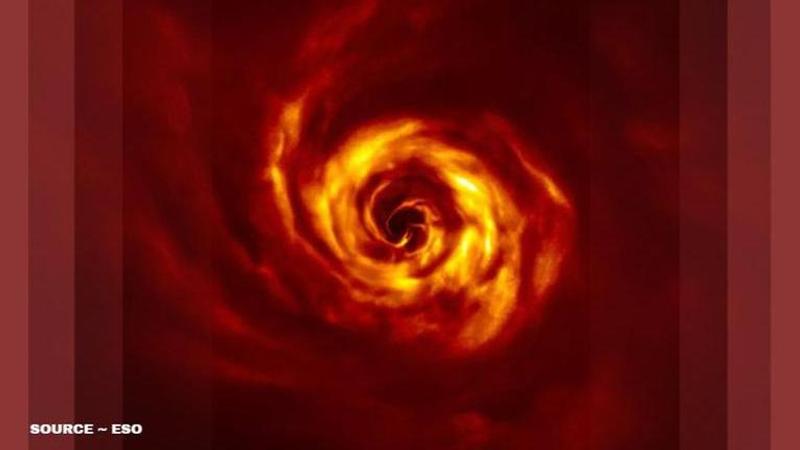Published 17:04 IST, May 21st 2020
'Birth Of A Planet': Astronomers capture a new structure being born in space; Watch
A new planet is being born, that is what astronomers from ESO are saying. The astronomers have captured the birth of a new plant for the first time ever. Read.

The mysterious possibilities of space have always intrigued man to try and understand several aspects of it. From watching the black hole to examining the planets, stars, galaxies and more, mankind has always tried its best to understand and learn more about the Universe. While the Universe never fails to impress us, the astronomers have surprisingly spotted the birth of a new planet. Yes, the observations were first sited by the European Southern Observatory aka ESO.
Astronomers capture the Birth Of A New Planet in Space
The European Southern Observatory made several observations using the ESO's Very Large Telescope (ESO's VLT) to study the space. During this time, ESO's VLT revealed surprising stills of a dense disc of dust and gas which seemingly appears to be a sign of a star system being born. The astronomers were studying the young star, AB Aurigae, when they spotted a prominent spiral structure with a 'twist' that marks the site where a planet may be forming. This new discovery could be mankind's first direct evidence of a new planet coming into existence.
Anthony Boccaletti, who led the study from the Observatoire de Paris, PSL University said that numerous exoplanets have been identified so far, but we do not know anything about how they form. But, through this new development, astronomers can better understand the process. ESO's VLT observations are published in 'Astronomy & Astrophysics' which not only helps researchers and astronomers understand how planets are born but it provides crucial clues to unravel the truth.
The images revealed by VLT observations display a mesmerising formation of the spiral of dust and gas around 'AB Aurigae'. This spiral structure is located 520 light-years away from Earth in the constellation of Auriga. Emmanuel Di Folco of the Astrophysics Laboratory of Bordeaux (LAB), who participated in the study said that such structures hint the presence of baby planets being born while they 'Kick' the gas which creates disturbances in the dust disc in the form of a wave, somewhat like the wake of a boat on a lake. The baby planet is also bound to rotate around the star which is why the wave appears to be in a spherical structure or a 'spiral arm'. The images show a bright yellow 'twist' region close to the centre of the new AB Aurigae image and lies at about the same distance from the star as Neptune from the Sun. This is the place where astronomers believe a planet is born.
The images were obtained with the SPHERE instrument on ESO’s Very Large Telescope in polarised light. In 2019 and early 2020, Boccaletti and a team of astronomers from several countries including France, Taiwan, the US and Belgium came together to capture a clear picture of AB Aurigae system by turning the SPHERE instrument on ESO's VLT in Chile toward the star. The SPHERE images are the deepest images of the AB Aurigae system obtained to date, as per reports.
Also Read | 'Solar Minimum' may have adverse effects on Earth; however its occurrence inevitable: NASA
The SPHERE's powerful imaging system aided astronomers to see the fainter light from small dust grains and emissions coming from the inner disc. clearer than they could before. This helped them to confirm the presence of spiral arms and later helped in spotting another remarkable feature called a 'Twist' which revealed the possibility of the presence of the birth of a new planet. Anne Dutrey from LAB said that the twist points to the presence of ongoing planet formation through some theoretical models. The co-author also revealed that the twist corresponds to the connection of two spirals; one winding inwards of the planet's orbit, the other expanding outward which join at the planet location. These two spirals allow gas and dust from the disc to accrete (come or bring together under the influence of gravitation) onto the forming planet and make it grow.
According to the reports, ESO is now constructing the 39-metre Extremely Large Telescope for further observations which will assist them to work efficiently with ALMA and SPHERE to study extrasolar worlds. This powerful telescope will allow astronomers to get even more detailed glimpses of how the dynamics of the gas contributes to the formation of planets, as per Boccaletti. Below video provides details of the observations made by ESO astronomers.
All Images from ESO Official Youtube Channel
Updated 17:04 IST, May 21st 2020







